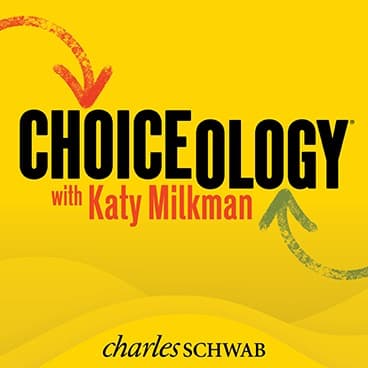I Don't Want to Know: With Guests Amelia Boone & Emily Ho
For some people, the check engine light on their car dashboard means an immediate trip to the repair shop. But for others, it represents a nagging unpleasant feeling that’s best to be avoided. So they put it out of their mind for as long as they can.
In this episode of Choiceology with Katy Milkman, we examine the tendency to avoid or ignore certain information when it may be uncomfortable or inconvenient.
Amelia Boone is a high achiever. Within a short time of taking up the grueling sport of obstacle course racing, she was winning world championships. At the top of her game, she went looking for other challenges, and eventually took up ultra-running—where athletes compete in races longer than marathons, sometimes as long as 100 miles! Again, Amelia quickly rose to the upper echelons of this elite club of athletes.
But then the injuries began. You'll hear about Amelia's attitude of pushing through the pain and training harder—an attitude that nearly destroyed her athletic career. When her injuries finally sidelined her from racing, Amelia realized that she'd been ignoring a crucial aspect of her health.
Amelia Boone is an obstacle racer, ultra-runner, and attorney living in Colorado.
Next, Emily Ho joins Katy to talk about the science behind this tendency to avoid certain types of information. She explains how the phenomenon impacts investors, medical patients, and employees, and she illustrates the perils of ignoring uncomfortable facts.
Emily Ho is a research assistant professor at Northwestern University's Department of Medical Social Sciences. You can read more about information avoidance in the research paper she co-authored with George Loewenstein and David Hagmann.
Choiceology is an original podcast from Charles Schwab.
If you enjoy the show, please leave a rating or review on Apple Podcasts.
Learn more about behavioral finance.
All expressions of opinion are subject to change without notice in reaction to shifting market conditions.
The comments, views, and opinions expressed in the presentation are those of the speakers and do not necessarily represent the views of Charles Schwab.
Data contained herein from third-party providers is obtained from what are considered reliable sources. However, its accuracy, completeness or reliability cannot be guaranteed.
Apple Podcasts and the Apple logo are trademarks of Apple Inc., registered in the U.S. and other countries.
Google Podcasts and the Google Podcasts logo are trademarks of Google LLC.
Spotify and the Spotify logo are registered trademarks of Spotify AB.



